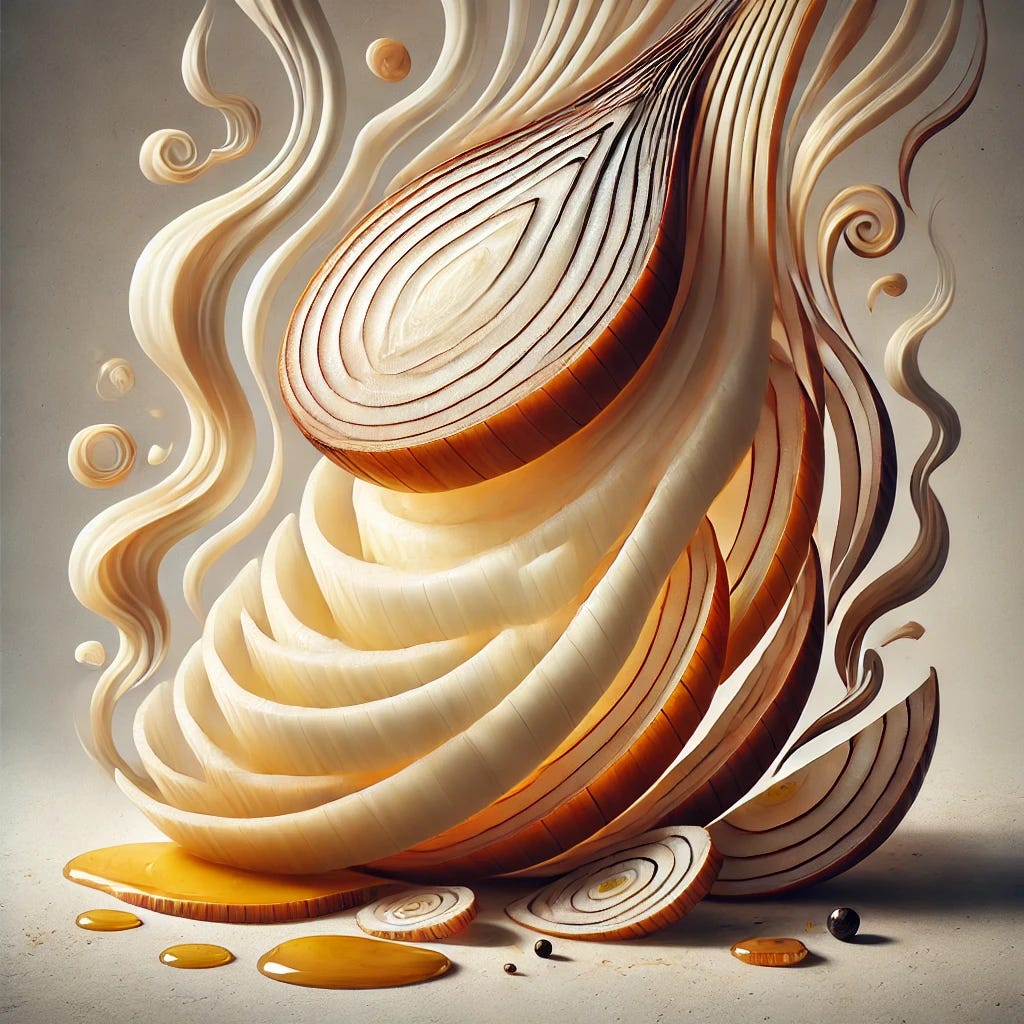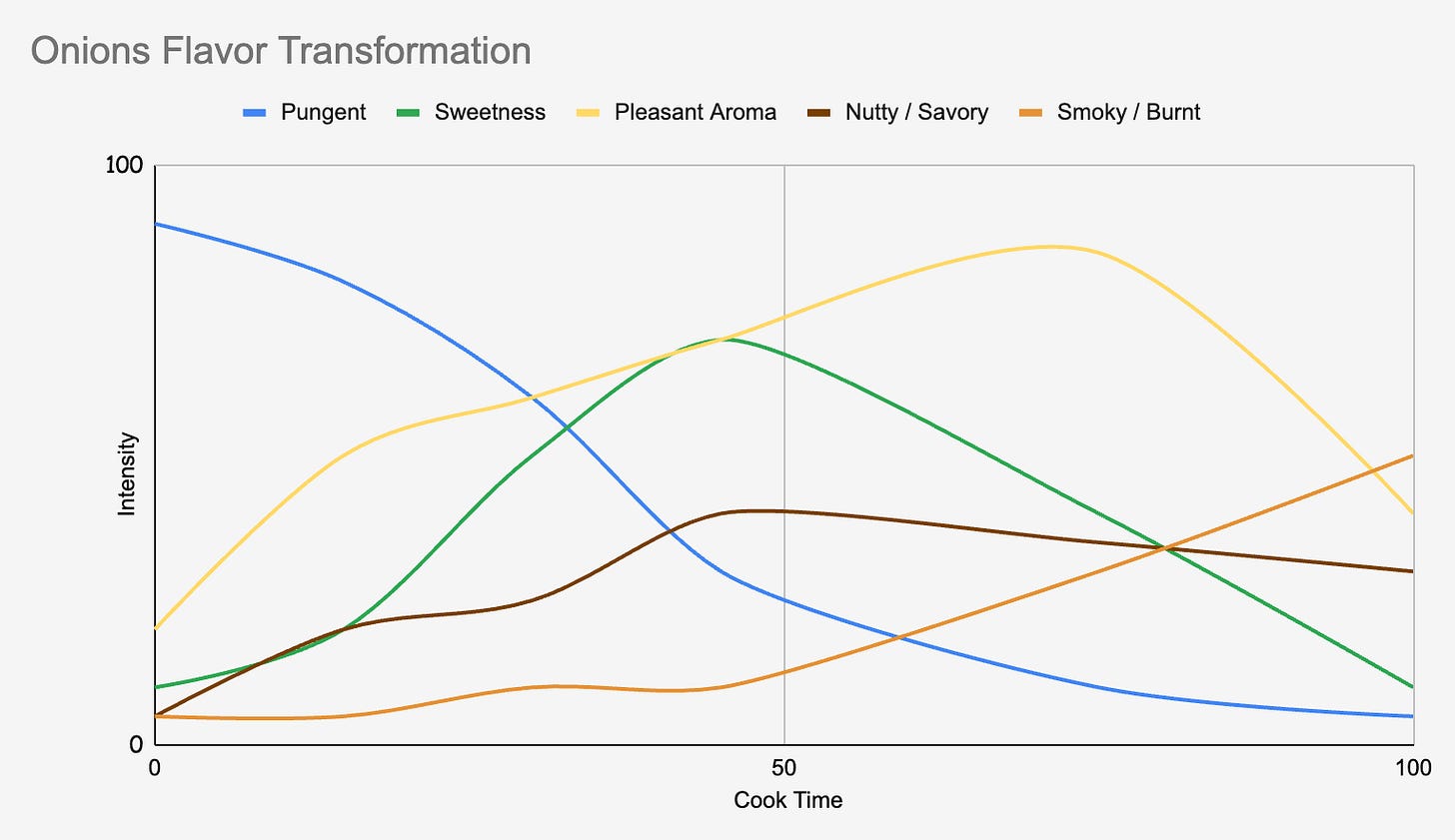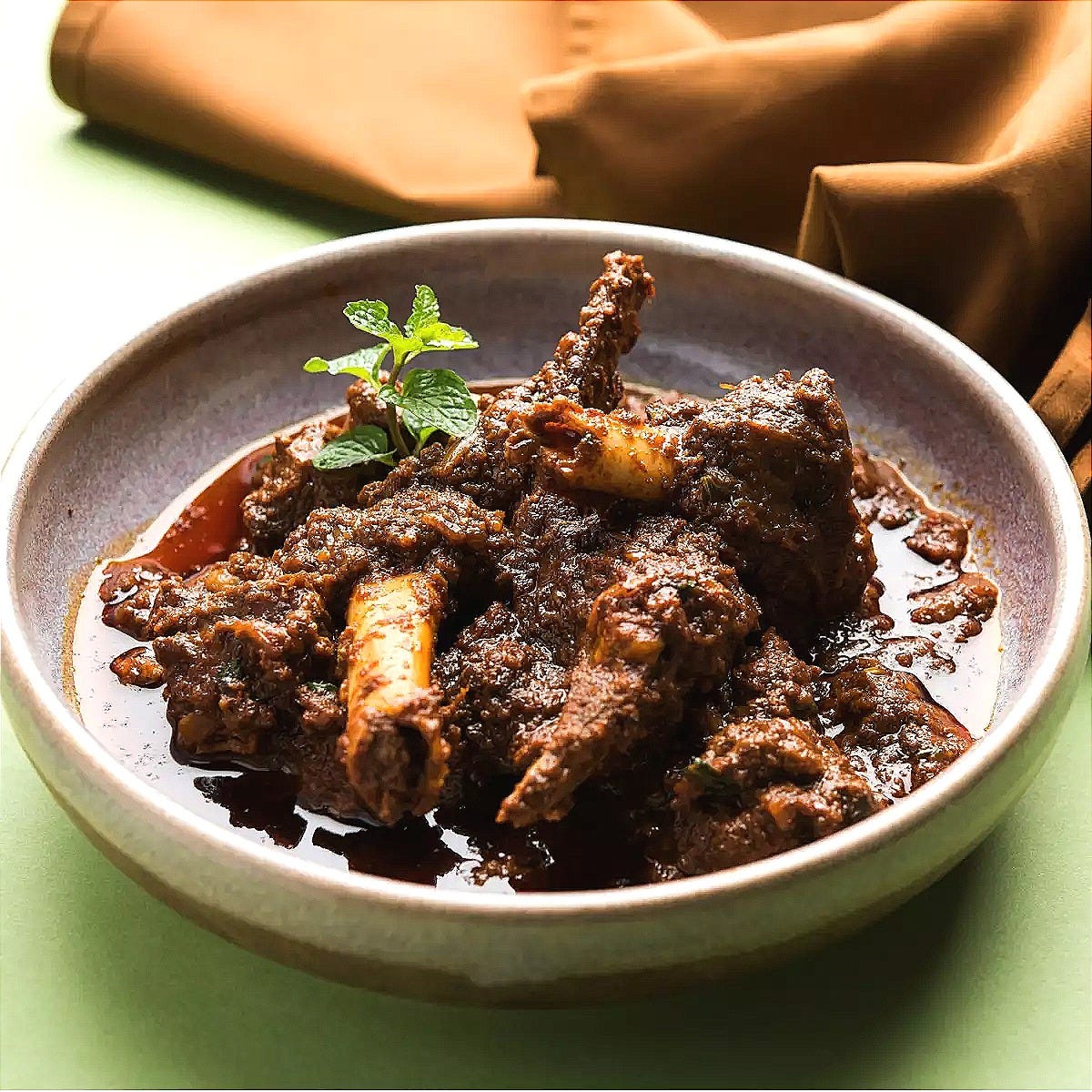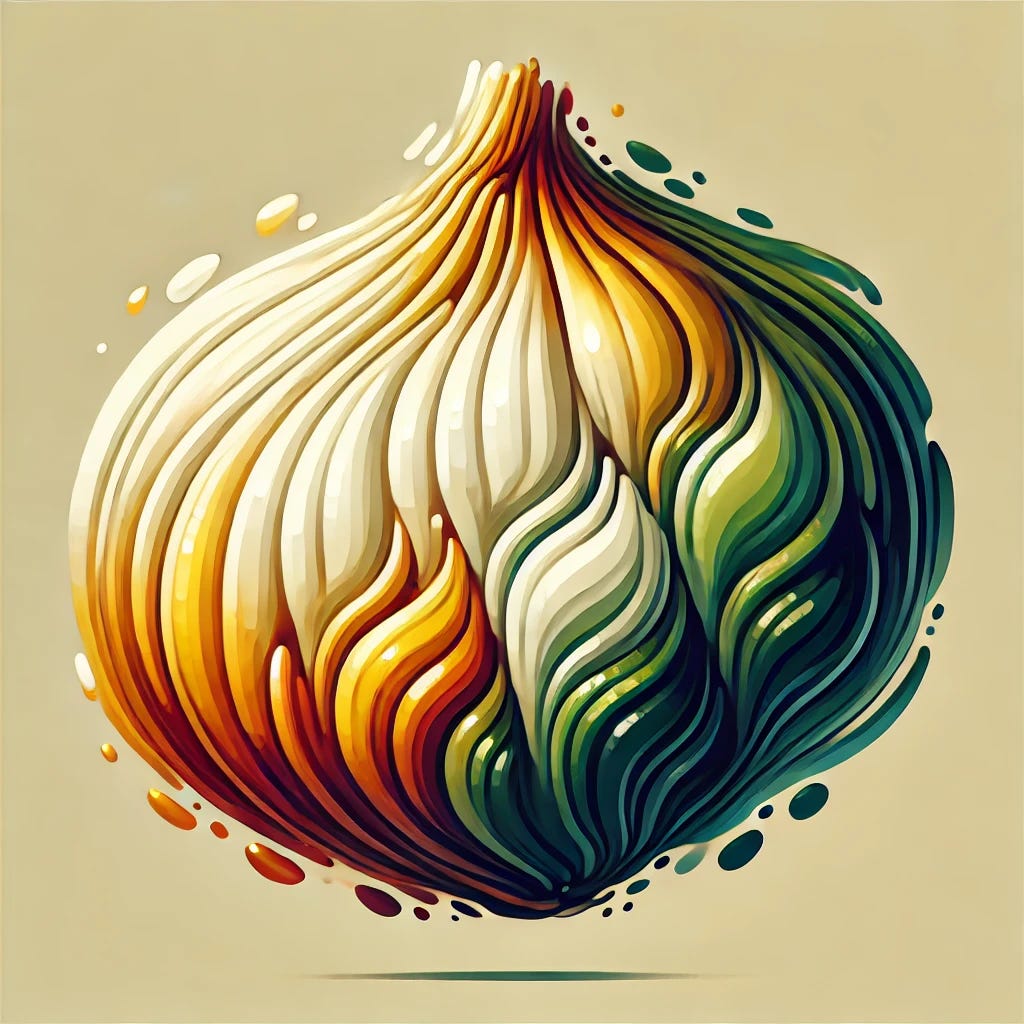One weekend, while cooking I found myself in the kitchen, drizzling crispy fried onions onto a hot Donburi bowl, when it struck me — mastering onions can be the key to crafting any truly delicious dish. Most of you all have sautéed onions, or at least worked with onions in the kitchen or overheard someone command “Please! Sauté the onions”. And if that’s not the case, this article would be a bit too hot to handle and you might be living under a pile of dirty dishes. For everyone else, buckle up; we’re about to take a deep dive into the world of onions.
Think about it: Onions are the soul of the cooking, capable of transforming any meal. Their flavors adapt and evolve based on how, and how much, you cook them, shifting from sharp and pungent to sweet and caramelized to fried smoky crispy and so on. Playing with the flavor and textures can elevate your dish from good to great.
Here’s the first thing I learned: sautéing onions is not the same as sweating onions. Sweating is a gentle technique, drawing out the flavor in low heat with minimal or no oil, allowing the onions to release their juices and cook in them without browning. Sweating is a slow and serene process. Sautéing, on the other hand, is where the magic truly happens. Picture this: a hot pan, a shimmer of oil, and the sizzle as onions meet the pan, the transformation is complex and amazing. The onions go from raw and firm to translucent. Their texture starts to soften and their aroma deepen. As the heat does its job, every detail matters—the fat or oil you choose, the size of your dice, type of the onion you choose, even how you stir. In this post, I’ll peel back the onion layers to explore the process of Sautéing. This is the focus of our article, lets dive in.
Texture & Color
At a basic level, onions are made up of tiny, tightly packed cells, like small water-filled balloons grouped together. When exposed to heat, the water inside these cells starts to evaporate. As this happens, the onion's texture softens, its size start to shrink, and the flavors gradually become richer and more concentrated.
Heres a pro trick: adding salt while sautéing onions can speed up the cooking process. The salt draws out water from the onion cells faster, helping them soften and bring the flavor out more quickly. See this effect in action in the video. It shows the fascinating process of how salt is pulling all the moisture from onion cells making it shrink.
And regarding the color transformation, as onions lose water, they initially become translucent. With further heating, they begin to brown due to the interaction between proteins, natural sugars, and heat—this is known as the Maillard Reaction, a key chemical process that defines many of the flavors in cooking. (There are plenty of resources to dive deeper into the Maillard Reaction—or maybe I’ll cover it in my next post) This process creates those savory, nutty, and roasted flavors that transforms a dish. Which is exactly why caramelized golden onions have a richer and more delicious flavor compared to their raw, pungent counterparts. When exposed to high heat and sufficient oil, onions develop a dark brown color.
Flavor & Taste
When you first slice into a raw onion, its pungent sulfur compounds becomes evident and it gives that sharp bite—this often makes your eyes water while slicing. Raw onions have a strong kick and are perfect for salads, salsas, or as a crunchy garnish etc.
I created the chart below to showcase the transformation of flavors as onions cook, evolving from pungency to sweetness, nutty richness, and smoky depth. Note that the time axis is just an approximate and intended only to provide a sense of progression without exact values. I’d love to hear your thoughts on the chart.
As soon as you start cooking the pungent onions, that strong pungency fades, allowing other flavors to come forward. These lightly soft onions but not yet browned provide a milder taste without overpowering the dish — at this stage it works great for stir-fries, soups, Indo-Chinese Chili Chicken etc. As the onion softens, as explained earlier, its natural sugars begin to caramelize and undergo the chemical reaction, contributing both sweetness, savory and an umami kick. You’ll find these lightly golden onions shine in Biriyanis, because they offer a balance of sweetness and a hint of saltiness.
If you let the onions brown further, you’ll start to notice a subtle burnt edge and a gentle smokiness in the aroma. Taking it a step further, intense browning develops the signature smoky flavor. These can be used in dishes that need a slightly smoky flavor for instance Indian dish named Bhuna Gosht (above picture) the onions are fried until they're deeply browned.
Handling onions is a perfect blend of science, art, and emotion. This AI artwork captures the spectrum of colors onions develop—from a green shoot on the farm to raw white in the kitchen, and finally to golden caramelized hues on the table. Next time you sauté onions, take a moment to observe the changes in their colors and textures. What do you notice? Share your observations in comments! Thanks for reading.
Until then Happy Cooking & Eating!
Curious for more? Read Johnny’s Other Posts..







